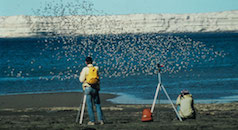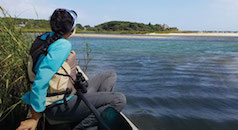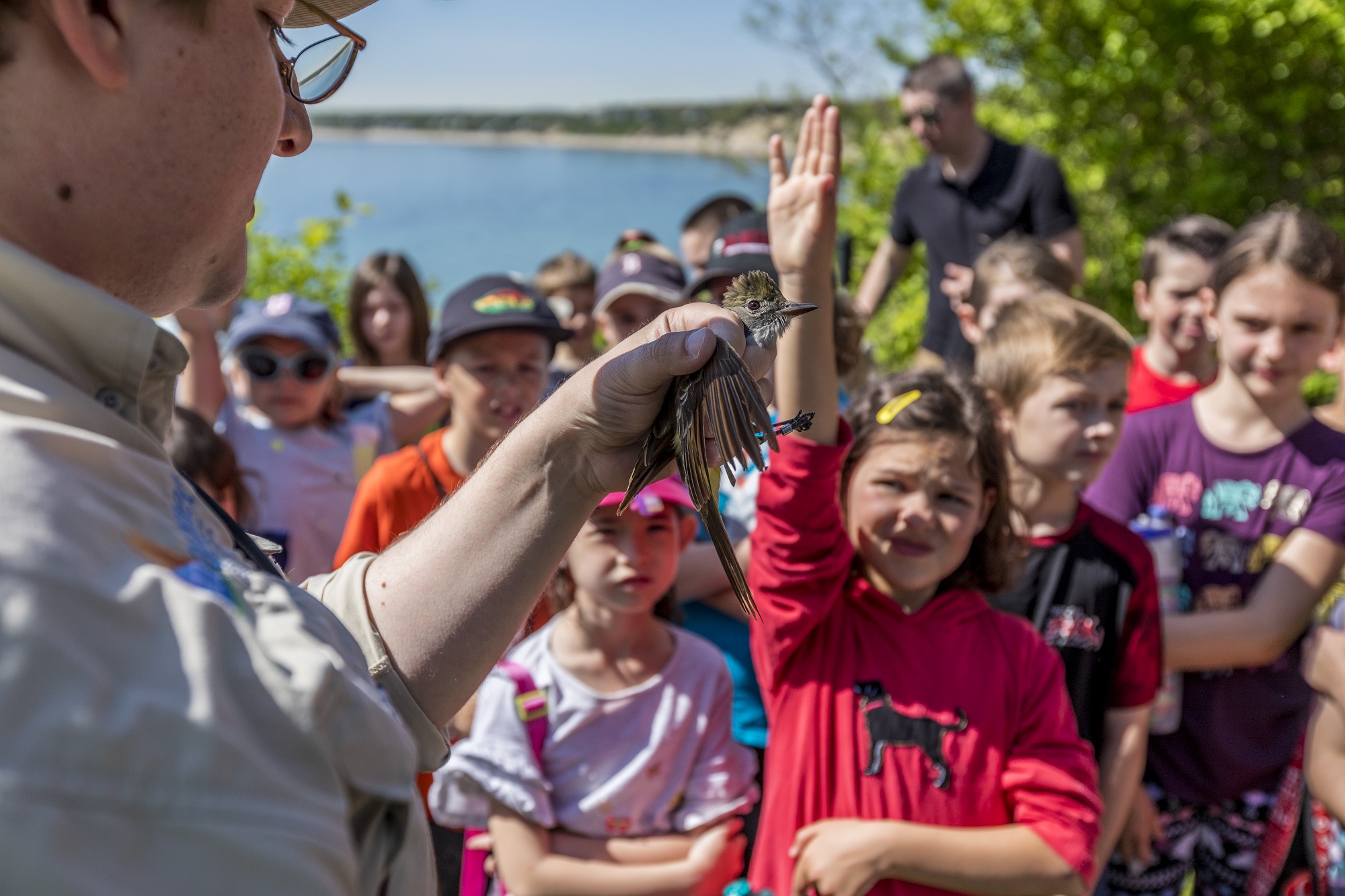Search Results

Flyways
Safeguarding the health of birds Manomet is best known for its work on avian species and is arguably the world leader in shorebird conservation. We are working to grow the impact of this work through enhanced monitoring, expansion of on-the-ground site conservation, a strong focus on working lands and seas, and enhanced partnerships. Many shorebird species use habitats across a vast geography, undertaking some of the longest migrations in the animal kingdom. They are also one of the bird groups undergoing the steepest declines. The total geographic area used by a species or population during its annual lifecycle is termed a flyway. Within each flyway, shorebirds tend to concentrate at just a few sites that provide safe foraging and resting...
Returning to Alaska
Many North American shorebird species are declining at alarming rates, but we do not know why. Through our Arctic field research, we are hoping to increase our understanding of the status of shorebird populations and to learn what is causing their declines. Manomet has conducted shorebird research in the arctic every field season since 2001, except for 2020 due to the pandemic. This summer, senior shorebird scientist Shiloh Schulte will return to the Arctic National Wildlife Refuge to continue several studies delayed by COVID-19 in 2020. Shiloh will work closely with the US Fish and Wildlife Service to deploy GPS tracking tags on Whimbrel, American Golden-Plovers, Pectoral Sandpipers, and other species as part of an ongoing study of local movement...
Manomet’s 2021 spring banding season is here!
Manomet’s bird banding lab opened for spring migration on April 15. Migratory and resident birds have been banded at Manomet since 1966 – a Black-capped Chickadee banded by Manomet’s by Manomet's Founding Director Kathleen (Betty) Anderson. Migratory bird banding operations like ours represent an important source of data about bird migration. Long-term ecology data sets can lead to discoveries often missed in shorter-term studies, and are critical for establishing baselines and tracking changes in the natural world. Because birds are widely surveyed by professional and amateur observers alike, and their natural histories are often well-understood, wild bird populations can be useful sentinels of environmental change and ecosystem health. Joining the banding lab this year are four talented banders from across...
Get to know the wildlife and habitat at Manomet’s campus
This summer, we will reveal our new interpretive nature trail at our Plymouth, Massachusetts campus. The trail and learning stations are under construction, but we want to introduce you to some of the landscapes, habitats, and species you’ll see when you visit. Manomet’s Bluff Manomet’s Plymouth campus shares a small stretch of coastline with Cape Cod Bay, a thriving ecosystem brimming with marine life. The bluff at Manomet’s headquarters that overlooks Cape Cod Bay is a terminal (or end) moraine, the point of furthest eastward advance of a glacial lobe of the Laurentide Ice Sheet, which reached its maximum advance about 23,000 years ago near Martha’s Vineyard and Nantucket. The large rocks along the shoreline, known as “glacial erratics,” were...
Flyway-scale Conservation: Midcontinent Shorebird Conservation Initiative
Many shorebird species breed in one place, and when the breeding season ends and the climate begins to change, they migrate to places with friendlier climates. These journeys take place along flyways, which offer the birds the feeding resources and spaces to rest and refuel they require. It is a round trip between the breeding and wintering grounds, a complete annual cycle governed by the seasons. In the Americas, three main flyways connect North America, Central America, South America, and the Caribbean. The Atlantic and Pacific flyways are populated by shorebirds that prefer or require coastal environments. In contrast, the Midcontinent flyway is used by shorebirds that inhabit interior habitats, such as lowland and highland grasslands, inland swamps and wetlands,...
From Workshop to Working Lands in Louisiana
The story of Manomet’s collaborative conservation efforts in Louisiana’s Working Wetlands begins at a Habitats for Shorebirds workshop in Mississippi in 2015. These workshops, hosted by Manomet throughout the Western Hemisphere, draw a wide variety of participants with a desire to learn about shorebirds and how they can contribute to their conservation. Some participants are extremely knowledgeable about waterfowl biology and wetland management. Some are experts in outreach and education. And some have a lot of interest and willingness to learn but little to no experience with shorebirds. One of the more memorable comments heard after a workshop was: “Before your workshop, I didn’t even know what a shorebird was. When I would go out duck hunting, I just called...
Manomet releases Shorebird Management Manual
Manomet is pleased to announce the completion of a new Shorebird Management Manual. This resource provides technical support to those with the ability to influence or implement beneficial habitat management decisions that can help stabilize declining populations of shorebirds in the Americas. Manomet developed this new Shorebird Management Manual (Iglecia and Winn, 2021) with guidance from a Steering Committee of shorebird experts, contributing authors, and the cumulative work of hundreds of conservation scientists, ornithologists, and land managers. “In 1992, Manomet published the first Shorebird Management Manual, by Doug Helmers,” said Brad Winn, Director of Shorebird Habitat Management. “Our collective understanding of these amazing birds has evolved considerably since then, and we knew several years ago that it was time to...
Shrimp farming and shorebird conservation
As long-distance migrants, shorebirds connect the Arctic with Argentina’s Tierra del Fuego along the Pacific Flyway, and the east coast of the United States to the Pacific coast of Central and South America. On all of these routes, shorebirds face distinct threats that require a coordinated response by different stakeholders throughout the hemisphere who work together to connect conservation with sustainable development. It is estimated that some 45% of the shorebirds that breed in the Arctic are in decline, with one of the principal factors being the loss or alteration of coastal wetlands. In Central America, the development of the shrimp-farming industry has severely altered the coastal wetlands. In the past twenty years, the shrimp farming industry has established itself...
Identifying collaborative research opportunities
Restoration of river herring is critical to restoring the health of lakes, ponds, rivers and streams, coastal food webs, and marine fisheries. Five years ago, the Downeast Fisheries Partnership held the first workshop focused on community-based restoration efforts. At the end of that meeting, fisherman and steward Bailey Bowden stood up and said, "I had no idea that anybody else cared about river herring as much as I do. I had no idea that there are scientists that study river herring. And, I had no idea that restoring river herring was critical to bringing back cod and haddock." Since those early days, Manomet and our partners have been working to build connections between research scientists and communities committed to restoring...
Human Welfare and Shorebird Conservation – How are they Connected?
Until just a few decades ago, biodiversity conservation was carried out without the involvement of the human communities that depend on it for their livelihoods. Biodiversity conservation is now defined by its intrinsic relationship with human beings and their dependence on it and how human communities impact and/or contribute to its management. An often overlooked aspect of conservation is that our existence and welfare as human beings depends almost entirely on the benefits that we derive from nature. These benefits can be called “ecosystem services.” We are unaware of any important areas for shorebirds, whether it be breeding areas, migration stopovers, or wintering sites, that do not simultaneously contribute either tangibly or intangibly to human welfare. These areas, due to...



